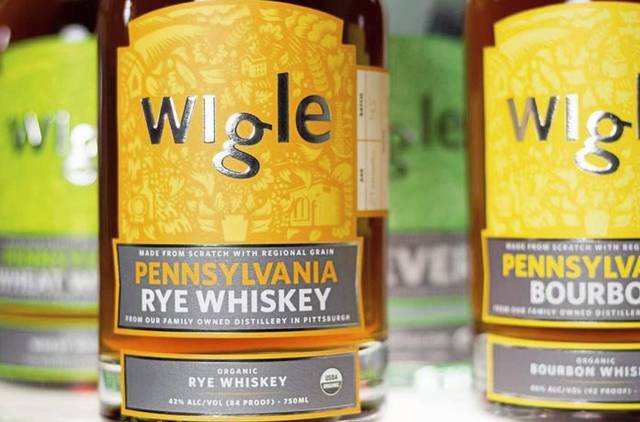https://development.triblive.com/local/regional/rye-revolution-craft-distillers-in-pittsburgh-elsewhere-bring-back-pre-prohibition-whiskey-favorite/
Rye revolution: Craft distillers in Pittsburgh, elsewhere bring back pre-Prohibition whiskey favorite

The revival of centuries-old rye whiskeys — including Monongahela and Maryland styles — is helping foster a renewed interest in historic spirits.
“Rye whiskey in general is swinging upward in the market,” said Teresa DeFlitch, director of people and education at Pittsburgh-based Wigle Whiskey.
The volume of rye whiskey produced in the United States increased nearly 16 percent in 2018, with makers selling more than 1 million cases for the first time, the Distilled Spirits Council reported this week. U.S. distillers sold just 88,000 cases of rye in 2009, according to DSC figures.
Instead of focusing on cornering a market and competing about which is better, craft distillers in the Mid-Atlantic region instead are embracing the past and the area’s role in American whiskey — rye, in particular, said DeFlitch.
The New York Times quoted her in an article published Friday about the resurgence of Maryland-style rye whiskey, even if people aren’t really sure what it was exactly.
“For all its fame and praise, no one quite knows what ‘Maryland style’ meant,” the Times story noted. “Most distillers back before Prohibition did not keep recipes, or document how they made their whiskey.”
The sweeter palette of Maryland-style rye whiskey likely came from using corn in the mash bill or swapping out distillers yeast for brewers yeast — or both.
Western Pennsylvania’s Monongahela Rye, considered by many as the gold standard of whiskey at one point, was known for it peppery bite — largely because it was made predominantly, if not completely, from rye.
For those that haven’t savored the nuance, DeFlitch compared it to the difference between rye bread and cornbread.
“Our ryes, we do in the style of Monongahela Rye,” DeFlitch said. “One of the reasons we were founded was to bring back that history.”
Wigle began operating in Pittsburgh’s Strip District in late 2011, becoming the city’s first whiskey distillery since Prohibition — a period from 1920-33 when alcoholic beverages were banned from being made, imported and sold in the United States.
Wigle has a number of rye whiskeys in its portfolio, including Single Barrel Straight Rye, Pennsylvania Rye and Pennsylvania Deep Cut Rye. Last year, the distillery partnered with the Senator John Heinz History Center to release a special, limited edition Prohibition Rye whiskey.
The roots of rye whiskey in Western Pennsylvania date to before the Whiskey Rebellion of the 1790s.
“Bountiful supplies of rye and other grain, coupled with the distilling expertise of area pioneers, created many of the largest manufacturers of rye whiskey in the world here,” the Tribune-Review previously reported.
“This really was the epicenter of American whiskey for a long time,” DeFlitch said of the Mid-Atlantic, which includes both Pennsylvania and Maryland. “The innovation we see today around Mid-Atlantic rye whiskey varieties is exciting. It honors that history and demonstrates the amazing craft scene we have here.”
Copyright ©2025— Trib Total Media, LLC (TribLIVE.com)
